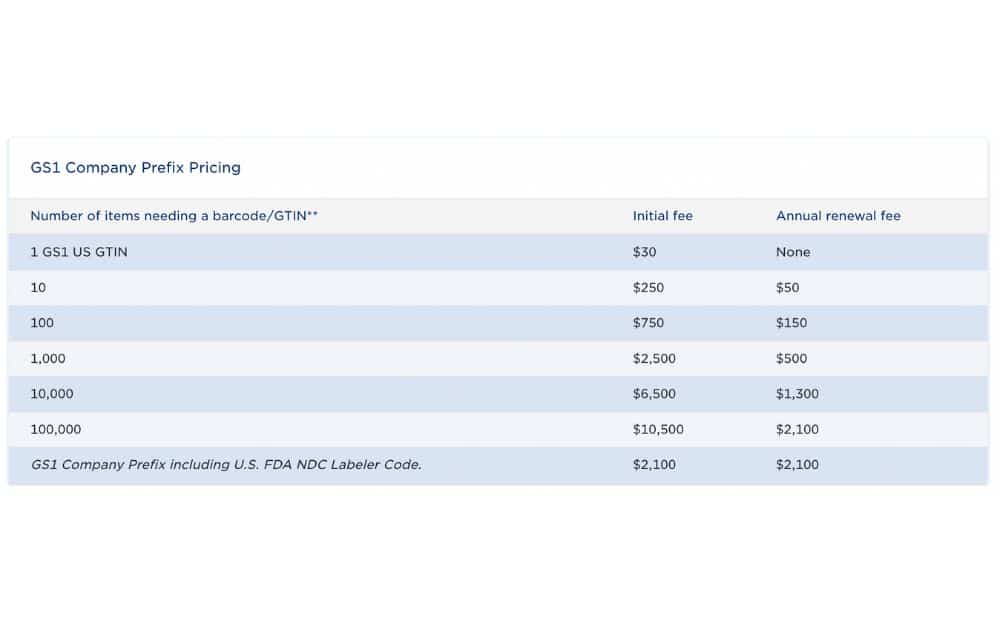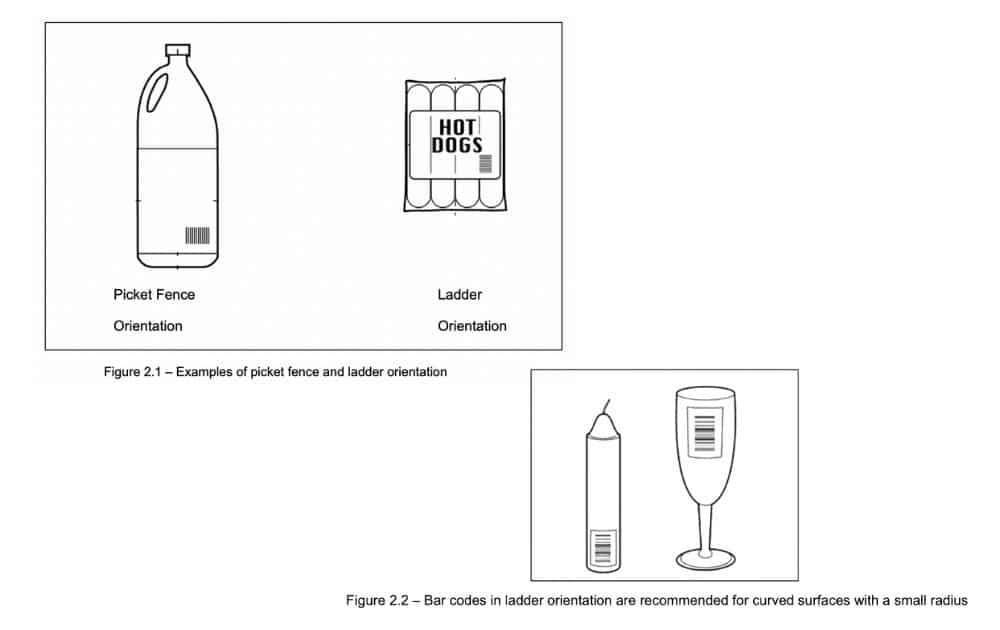Meeting Amazon GS1 barcode requirements is an essential element for sellers seeking success on Amazon.
Though the marketplace updated its GS1 barcode policy back in 2016, it wasn’t too strict in implementing it until 2018.
Now it’s different, and it goes without saying that owning the correct GS1 barcodes will help you continue listing on Amazon and getting penalized by the marketplace.
In this article, we delve into the significance of Amazon GS1 barcodes, their benefits for sellers, and practical guidelines to navigate this vital aspect of selling on Amazon.
What are GS1 Barcodes?
A barcode is a machine-readable representation of data in the form of parallel lines, rectangles, or dots printed on products or other items.
If you’ve been reading about GS1 barcodes, you’ve probably come across terms like EAN, GTIN, UPC codes, and many others.
Let’s break down these terms to fully understand these barcodes within the context of selling on Amazon.
- GS1 is a global not-for-profit organization that introduced barcodes. Founded in 1974, GS1 has revolutionized how products are tracked and managed throughout the supply chain.
- GS1’s primary mission is to enable seamless and efficient business processes by providing unique identification numbers for products, services, and locations. The most well-known of these ID numbers are the Global Trade Item Numbers (GTINs.)
- GTINs uniquely identify a product and are tipically encoded into a UPC (Universal Product Code) or EAN (European Article Number) barcode. They can also be used without a barcode to identify and list a product online.
- The first 6-9 numbers in a barcode are the manufacturer’s prefix, stored and provided by GS1.
GTINs are like fingerprints, no one else in the world should have the same one. Almost every Amazon item has a GTIN since it’s required to create new listings. In addition, all manufacturers registered with GS1 also get a GTIN, to which every product they make is connected.
Here are the parts of a GTIN, be it a UPC, an EAN, or another barcode type:
1. GS1 Company Prefix (GCP)
GS1 US assigns a GS1 Company Prefix to a specific company. This number is used to construct GTINs.
Note that GS1 Company Prefixes usually starty with a zero. However, to construct GTINs, sellers will use the UPC Company Prefix, which omits the zero.
As seen below, the UPC Company Prefix consists of 6 to 12 digits and is the first part of the GTIN. It identifies the company that owns the GTIN and provides a range of numbers for the company’s products.

2. Item Reference Number
Also known as the product number or item reference, this part follows the UPC Company Prefix. It uniquely identifies a specific product or service within the company’s range of products.
3. Check Digit
The check digit is the last digit of the GTIN and is calculated using a formula based on the preceding digits. It serves as a form of error detection.
Related content: Amazon Shipping Label Requirements
Why Sellers Need Unique GTINs for Amazon
When you create a product listing on Amazon, you must encode a GTIN in addition to an Amazon Standard Identification Number or ASIN, which is the platform-specific identification number.
However, not just any GTIN would do. It must be unique and obtained from GS1. In 2002, GS1 changed its agreement for new companies seeking a GTIN. The revised agreement clearly prohibited the use of the Company Prefix “other than for the use of the owner company.”
These Amazon barcode requirements help ensure that the manufacturer data is the same across their products.
To make valid product identifiers more accessible to those just starting out, GS1 US introduced in 2020 a single GTIN option. Starting at $30, a company could obtain an authentic GS1 barcode with no renewal fee.

For many sellers though, the bundled options associated with a GS1 Company Prefix model end up being more cost-effective and aligned with their long-term growth strategy.
Aside from Amazon, many other major retailers prefer to work with companies that use a GS1 Company Prefix, as it is the basis for a host of other identification numbers and barcodes that often need to be created to flesh out your supply chain.
Noncompliance
What if you acquire your codes somewhere else? Doing so can lead to sticky situations, such as:
- You could be using a barcode registered for a different product.
- The barcode might already be assigned to an item in an unrelated category with a different license.
- You might be using a replicated GTIN, which may not be searchable within GS1. As a result, your barcode could not be verified.
Amazon checks every barcode to verify that they’re registered in the GS1 database. That said, any seller using barcodes acquired outside GS1 may have their products delisted from Amazon.
GS1 Company Prefix holders do need to renew their membership every year with GS1. However, the fees are worth it if it means being able to grow your Amazon venture.
As Amazon can review your listings at any time, they can flag codes with discrepancies. They can also flag codes that don’t reflect the same manufacturer or brand that you have on your listings.
In a worst-case scenario, any listings with invalid product UPCs can be removed. Plus, your ASIN creation or selling privileges could be revoked, either temporarily or permanently.
Choosing an Amazon GS1 Barcode for Your Products
If you’re unsure whether to get a UPC or an EAN Amazon GS1 barcode, here are the main differences between the two:
- Structure. The standard UPC-A format consists of 12 digits divided into three sections, while the standard EAN-13 format contains 13 digits.
- Regional Usage. Amazon GS1 UPC barcodes are widely used in the United States and Canada. Amazon GS1 EAN barcodes are used in various countries worldwide, including Europe, Asia, Australia, and many others. If you need GS1 barcodes for Amazon to sell products outside North America, EAN barcodes are more versatile.
How to Get GS1 UPC Codes for Amazon
Here are the steps to getting Amazon GS1 UPCs for your products:
- Visit the official GS1 US website and select either a GS1 Company Prefix (if you have more than 10 product variations to identify and list) or a single GS1 US GTIN (most appropriate for those starting out with only a few products) . You must provide information about your company and the products you intend to sell before getting a GS1 barcode.
- Start assigning individual GTINs to each product using GS1 US Data Hub. This is a free online tool that helps you create, manage, and share GTINs and barcodes.
- Generate UPC barcode images for each GTIN using GS1 Data Hub. These images can be saved and shared with printing partners to add to your product packaging.
- Incorporate the barcode images into your product labels or packaging design. Check to make sure the barcode is clear, visible, and high-quality to facilitate accurate scanning. Many GS1 members use third-party software for barcode generation and labeling, too. A list of GS1 US Solution Partners can be found here.

Correcting Product Listings with Incorrect UPCs
How do you know if you’re reselling items with codes bought outside GS1, and how can you correct them? Here are the steps you could take:
- Review your product listings on Amazon and identify those with incorrect GS1 Amazon UPCs. Look for discrepancies between the GS1 UPC assigned to the product and the actual barcode on the packaging.
- If you suspect that the UPCs are incorrect, contact GS1 to verify the authenticity of the UPCs.
- If the UPCs are incorrect, obtain the correct GS1 UPCs and update the product listings with accurate information.
- Depending on the situation, you may need to create new listings with the correct GS1 UPCs. Deactivate listings with incorrect UPCs to avoid confusion and ensure that customers can find the correct product.
- If you encounter any issues during the correction process, contact Amazon Seller Support for assistance. They can help you with any technical issues and guide you through the proper steps to update the listings.
Frequently Asked Questions (FAQs)
Does Amazon require GS1 barcodes?
According to Amazon Seller Central, categories require sellers to use a GTIN (also referred to in Amazon guidelines as UPC or EAN). The platform says this is a move to provide industry-standard product identifiers for listings to improve Amazon’s overall catalog.
However, you can get an Amazon GTIN exemption for certain goods.
How Do I Get a GTIN Exemption on Amazon?
Before you look for steps on how to get a GTIN exemption on Amazon, you must first ensure that you are qualified for GTIN exemption.
Exempted products usually fall under custom-made goods, handmade products, or vintage items.
If you believe one of your products qualifies, go to Amazon Seller Central’s Apply for a GTIN exemption page to request an exemption.
Do I need an EAN if I already have a UPC?
No, you don’t need an EAN for the same product if you already have a UPC. Both UPC and EAN are different types of GS1 barcodes used for product identification.
The Lowdown
Complying with Amazon GS1 barcode requirements is crucial for any seller looking to thrive in the competitive online marketplace.
Meeting these requirements not only ensures compliance with Amazon’s policies but also helps protect brands from counterfeits and duplicates.
By obtaining authentic GS1 barcodes and ensuring their correct placement on product packaging, sellers can optimize inventory management and boost customer trust and satisfaction.
Authors





